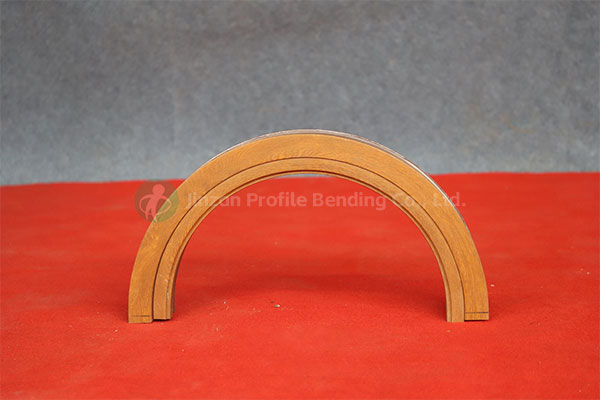Redefining the construction industry with innovative solutions, cuttin-edge technology and sustainable practices
Profile Bending 2025-10-10
Profile bending is a crucial process in manufacturing, particularly in industries such as construction, automotive, and aerospace. This technique involves bending metal profiles (such as beams, tubes, and frames) to achieve desired shapes and configurations for specific applications. In this article, we will explore the processes involved in profile bending, the equipment used, and the importance of quality control to ensure optimal results.
The profile bending process can be categorized into several key stages:
1.Design and Planning: The initial step in profile bending is to create a design that specifies the dimensions, angles, and curves required for the bent profile. This design is often generated using computer-aided design (CAD) software, which allows for precise modeling and adjustments before production begins.
2.Material Selection: Once the design is finalized, the appropriate material must be selected. Common materials for profile bending include steel, aluminum, and various alloys. The choice of material affects the bending process due to differences in strength, ductility, and thickness.
3.Preparation of Materials: The raw materials are cut to size based on the required dimensions. This preparation might involve cutting long lengths of metal into manageable sections that can be easily handled during the bending process.
4.Bending Process: The actual bending can be performed using several methods, including:
-Roll Bending: In this method, the profile is passed through three rollers that gradually bend it into the desired curve. This technique is ideal for creating smooth, continuous bends.
-Press Bending: This involves using a hydraulic or mechanical press to apply force to the profile, bending it around a die. Press bending is suitable for creating sharp angles and precise bends.
-Mandrel Bending: A mandrel is inserted into the hollow section of the profile to maintain its shape during the bending process. This method is crucial for preventing deformation in thin-walled tubes and is often used in high-precision applications.
5.Finishing: After bending, the profiles may undergo additional finishing processes, such as welding, grinding, or painting, to meet specific aesthetic or functional requirements.

The equipment used in profile bending plays a significant role in the efficiency and accuracy of the process. Key pieces of equipment include:
-Bending Machines: These specialized machines can be hydraulic, mechanical, or electric and are designed specifically for bending profiles. Advanced bending machines often feature CNC (Computer Numerical Control) capabilities, allowing for highly precise and programmable bending operations.
-Rollers: For roll bending, machines equipped with multiple rollers allow operators to adjust the gap and angle to achieve the desired curvature.
-Presses: Hydraulic and mechanical presses are essential for press bending, providing the force necessary to shape the material accurately.
-Mandrels: Used in mandrel bending, these tools support the interior of the material to prevent collapse during bending.
Quality control is vital in the profile bending process to ensure that the final product meets specified standards and tolerances. Effective quality control measures include:
1.Material Inspection: Before beginning the bending process, raw materials should be inspected for defects and consistency in thickness and composition. This helps prevent issues during bending that can lead to failure.
2.Dimensional Verification: Regularly measuring the dimensions of the bent profiles during production is crucial. This can be done using calipers, gauges, or laser measurement systems to ensure the product adheres to the design specifications.
3.Testing for Structural Integrity: Depending on the application, bent profiles may be subjected to stress testing or other forms of evaluation to confirm their strength and performance under load.
4.Process Monitoring: Implementing real-time monitoring systems can help detect deviations in the bending process, allowing for immediate corrective actions to maintain quality standards.
5.Final Inspection: Before delivery, a thorough inspection of the finished products should be conducted, focusing on surface finish, dimensional accuracy, and any additional specifications outlined in the project requirements.
Profile bending is an essential manufacturing process that enables the creation of complex shapes and structures used in various industries. By understanding the processes involved, utilizing the appropriate equipment, and implementing stringent quality control measures, manufacturers can produce high-quality bent profiles that meet the demands of modern engineering applications. As technology advances, the methods and equipment used in profile bending will continue to evolve, further enhancing the precision and efficiency of this indispensable manufacturing technique.